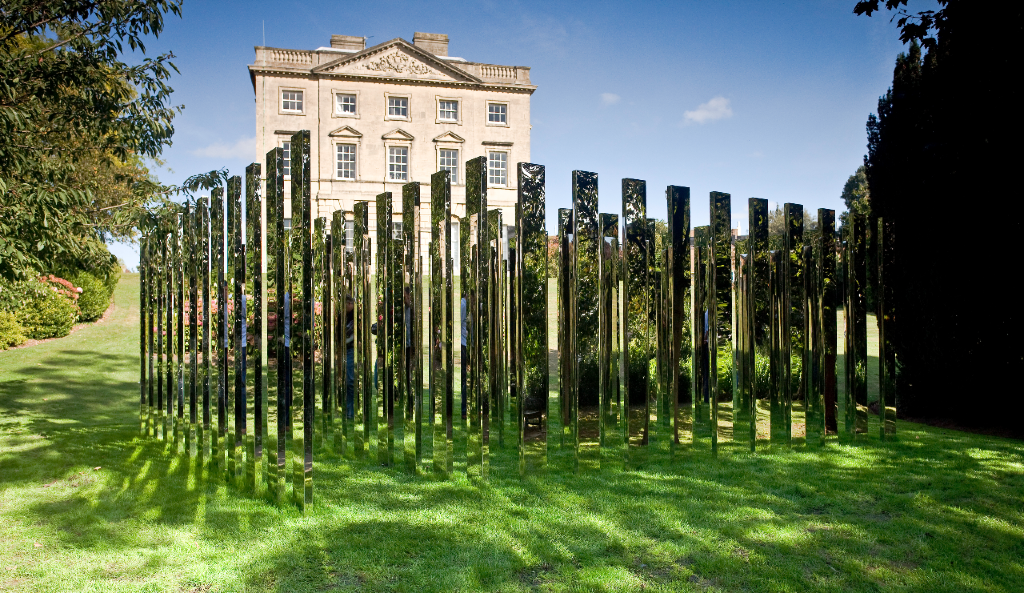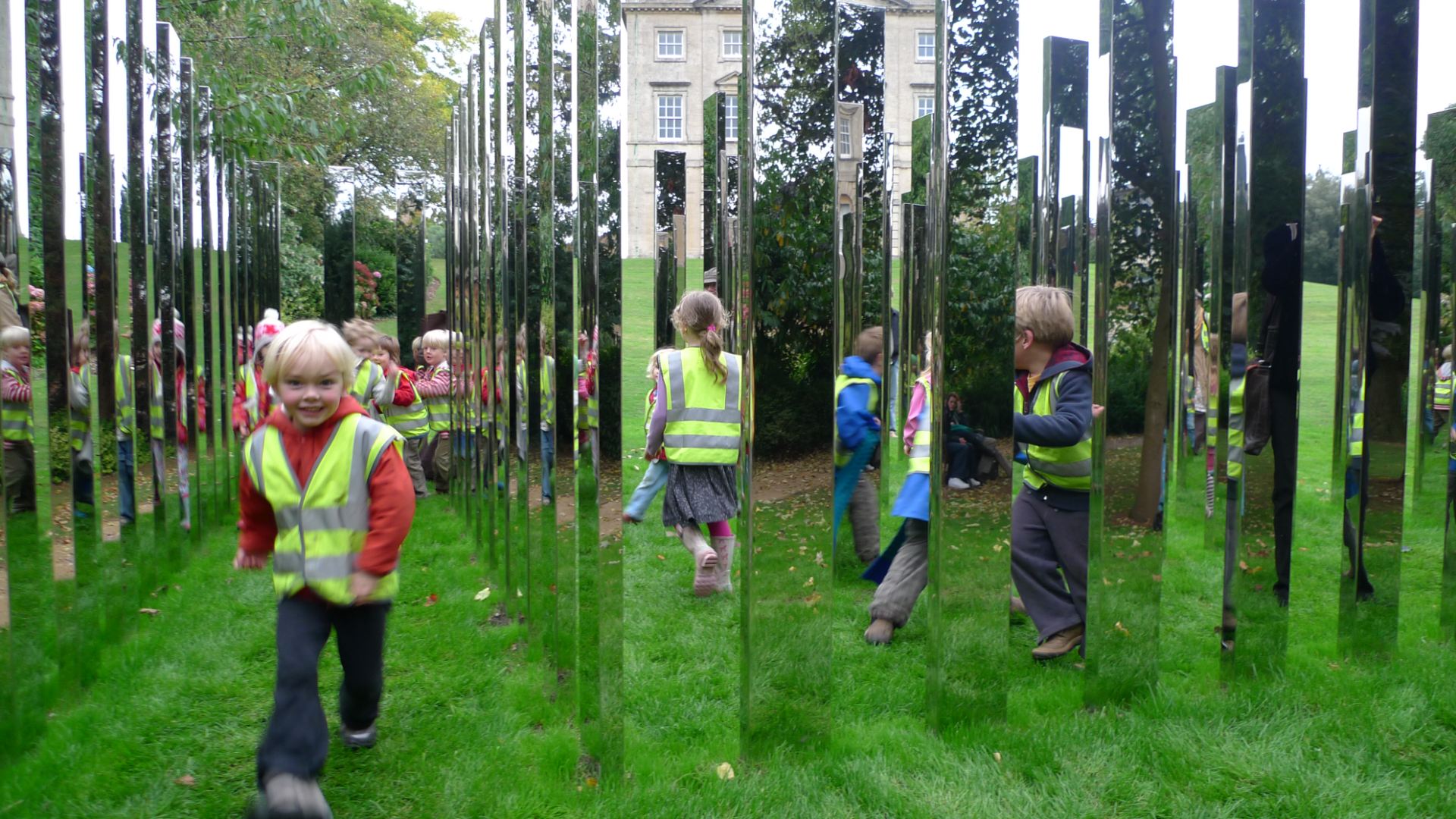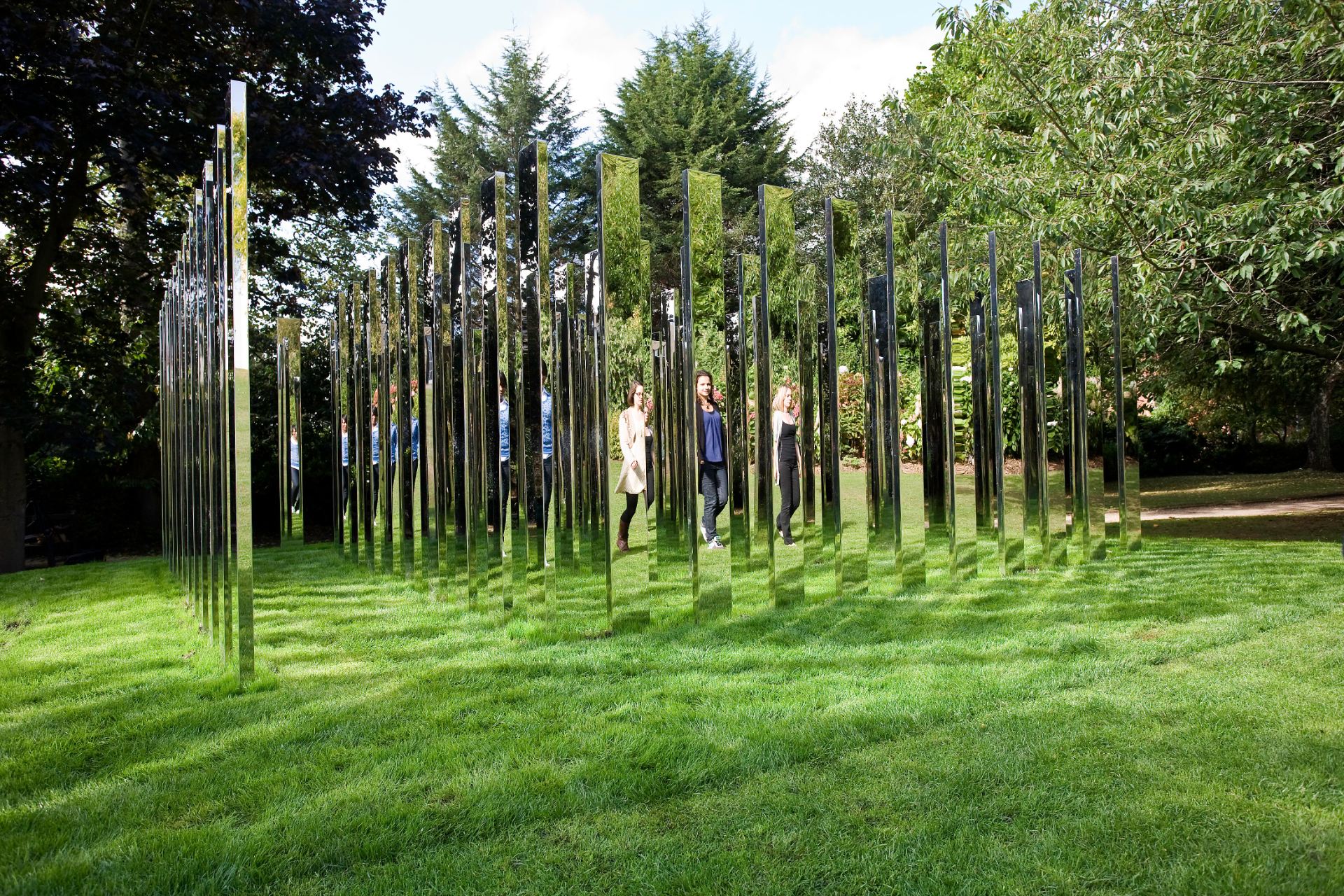Follow Me, by Danish artist Jeppe Hein, was commissioned for Royal Fort Gardens, Bristol to mark the centenary of the University of Bristol receiving its charter in 1909. It was the first of two permanent public artworks, the second being Hollow, that were produced by public art producers Situations for the University of Bristol’s Royal Fort Gardens.
The commission was developed in 2009 close consultation with Bristol City Council, English Heritage and experts in archaeology and landscapes. A Centenary Public Art Committee, chaired by Professor Martin White, supported the management of this commission.
Follow Me is composed of a square formation of 76 vertical high polished stainless steel plates, sited in the form of a 6 x 6m labyrinth, at the base of an incline leading down from Royal Fort House.
This artwork invites us in. On entering, the mirrored surfaces of the posts reflect not only those standing inside and the surrounding landscape, but also the adjacent mirrors. The multiplied reflections produce a dizzying sense of space and envelop us in an unfamiliar and disorienting environment, similar to that of a labyrinth.
Inspired by the notion of the University as a place of learning and self-discovery …( Follow Me) responds to the history of the University’s site, in particular the original 18th century design of the landscape gardener Sir Humphry Repton, whose garden designs similarly sought to invoke imaginative encounters
Jeppe Hein
Born in Denmark in 1974, Jeppe Hein has achieved international recognition for his interactive works which bring together art, architecture and technical inventions and expand our notion of what art is or could be. His experiential works place the viewer front and centre, focussing on their experience and perception of the surrounding space. His works are often site-specific and surprise with optical tricks and playful humour.
In the UK, some of Hein’s work is on display at Southbank Centre, in the Tate Modern and the Saatchi Gallery. He has shown in an extensive number of international exhibitions including: Schirn Kunsthalle, Frankfurt (2020); Breathe with Me at UN Headquarters and in Central Park, New York City (2019); Kunstmuseum Thun (2018); Château La Coste (2017); Brooklyn Bridge Park New York (2015); 21st Century Museum of Contemporary Art, Kanazawa (2011); ARoS Kunstmuseum, Århus (2009); The Curve, Barbican Art Centre, London (2007); Centre Georges Pompidou, Paris (2005) and P.S.1. MOMA, New York (2004) among others. He participated in La Biennale di Venezia’s 58th edition in 2019 and 50th edition in 2003.
Hein lives and works in Berlin.
Situations
Situations commissioned and produced both temporary and long-term public artworks, as well as acting as a facilitator to bring people and partners together through collective programmes and festival events in the South West of England and internationally.
Royal Fort Gardens are listed Grade 1 and represent part of a large, 18th-century estate that belonged to the Tyndall family. The gardens form the grounds of Royal Fort House, which was built between 1758 and 1761 in Baroque, Rococo and Palladian architectural styles.
In 1799 the grounds were landscaped by Sir Humphry Repton, England’s pre-eminent landscape gardener at the time.
Combining garden design with elements of Romantic landscape painting, he introduced irregular sight lines, winding paths and reflective surfaces of water to give the illusion of depth and space, and to add detail and interest.
For me this work of art reflects, at a symbolic level, the journey of a university student. The reflective quality of the work’s surfaces create a space for self-discovery and inner ‘reflection’ which represent in some ways the personal development that one experiences throughout his/her time at university.
Location and access
- Google maps location: Royal Fort Gardens, Tyndall Avenue, BS8 1TH UK
- What3words location: decreased.hotel.ground
Follow Me is free to visit and open to all. It is permanently sited in the University’s historic Royal Fort Gardens, on the lawn at the base an incline leading down from Royal Fort House. From the entrance to Royal Fort Gardens on Tyndall Avenue, follow the accessible path to your right, round the edge of the garden.
Visitors are invited to explore inside the labyrinth to fully experience the work. Please note that paths within the sculpture are narrow and wheelchair access is therefore restricted to around the outside of the sculpture.
Royal Fort Gardens are open every day of the year. Access to the sculpture may occasionally be limited due to maintenance.



